Jiangshi – Terrifying Vicious Ancient Chinese Vampire In Disguise
A. Sutherland - AncientPages.com - Myths and legends of Europe, the Americas, China, Japan, and India describe terrible bloodsuckers that may differ in power and individual characteristics. Still, all of them fascinate people, and their vampiric fright knows no borders.
The Jiangshi vampire. Credit: Adobe Stock - FantasyLand86
Influential legends about Jiangshi (or Jiang shi) have long inspired a genre of literature, movies, and video games, especially in Hong Kong and East Asia.
Jiangshi - a genuinely terrifying undead Chinese creature - is described in Chinese legends and folklore as a half-vampire, half-zombie.
Typically, the Jiangshi (hopping vampire or hopping zombie) is depicted as a stiff corpse dressed in the official garments of the Qing dynasty (1644–1912), the last great dynastic empire to rule the region, with many powerful and long-lived rulers.
The belief that the human body can walk and function without personal consciousness or the soul is an idea that has captivated human beings for centuries. This idea is partially implausible as it may be more accurate than one thinks. Within Chinese culture and folklore, strange stories describe a creature known as the Jiangshi. It is believed to be as real, deadly, and terrifying as zombies.
Perhaps the Jiangshi is only an unrealistic, evil creature in Chinese folklore that was used in simple stories to scare children; however, the most remote villages of China blindly believe in the existence of this entity from the underworld and many similar ones.
Are not all the legends based on true events?
According to Chinese legends and folklore, Jiangshi – (‘jiang’ means hard) is a reanimated corpse of a victim of drowning, suicide, hanging, or smothering. These creatures are believed to be particularly vicious, ripping the heads and limbs of their victims.
The Jiangshi is so stiff that it cannot bend its limbs and body, so it moves by hopping, with its arms always outstretched, seeking out living creatures at night and killing them by devouring their ‘qi’ life force. It helps the Jiangshi to survive.
The Jiangshi vampire wears a uniform coat-like robe and round, traditional mandarin hat; they cannot speak and have pale skin, furry green hair, sharp, long claw-like fingernails, and an extremely long tongue.
The Jiangshi is not traditionally equated with the zombie but instead a vampire. During the day, the Jiangshi rests in either a coffin or hides in a dark, chilly cave.
According to one Qing Dynasty scholar, Ji Xiaolan (1724–1805), Jiangshi creatures can be divided into two groups: an old corpse that hasn’t decomposed or a freshly dead body returning to life. When Jiangshi’s corpse is recently deceased, the creature looks almost like an average human. Others, who have been decomposing for some time, have rotting flesh hanging off their yellowing bones. Jiangshi lore is very ancient, and the creature’s existence was taken very seriously by scholars in ancient China who speculated on how Jiangshi was created.
In the meantime, ancient Chinese sincerely believed in dangerous encounters with Jiangshi and tried to protect their homes.
Slats of wood 6 inches high were built under doors in the strange belief that these would keep out hopping zombies. To keep a Jiangshi in place, a slip of yellow paper with a spell written on it was usually also stuck on the corpses.
But the best way to eliminate this terrifying creature was to ask a Taoist priest for help. He was the only one who could balance their life and death with dark and light.
In popular Chinese mythology, reanimated corpses that hop around, killing living creatures to absorb life essence from their victims. Jiangshi is also pronounced Geung si, which is the Cantonese pronounciation for 'Hopping Corpse'. They are said to be created when a person's soul fails to leave the deceased's body.
The myth of "The Corpses who travel a Thousand Li" describes Tao wizards who transport corpses over long distances to hop on their own feet back to their hometown for proper burial. But there were also people who believed that hopping corpses were originally smugglers in disguise who wanted to scare off law enforcement officials
Hopping Corpses were a popular subject in Hong Kong movies during the 1980s;
some movies even featured both Chinese Hopping Corpse and "Western" zombie. In
the movies, hopping corpses can be put to sleep by putting on their foreheads a piece
of yellow paper with a spell written on it.
Generally in the movies these terrifying figures are dressed in imperial Qing Dynasty clothes, their arms are always outstretched due to rigor mortis. They can be evaded by holding one's breath, as they track living creatures by detecting their breathing.
Written by – A. Sutherland AncientPages.com Staff Writer
Updated on February 16, 2024
Copyright © AncientPages.com All rights reserved. This material may not be published, broadcast, rewritten or redistributed in whole or part without the express written permission of AncientPages.com
Expand for referencesReferences:
K.W. Bishop, 'How zombies conquered popular culture'.
More From Ancient Pages
-
 Secret High-Tech Knowledge Hidden In Ancient Manuscripts And The Mysterious Seven Sky Kings
News | Aug 24, 2021
Secret High-Tech Knowledge Hidden In Ancient Manuscripts And The Mysterious Seven Sky Kings
News | Aug 24, 2021 -
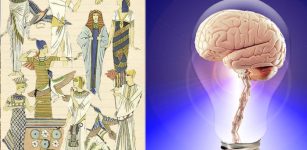 Scientists Investigate – Did The Human Brain Shrink 3,000 Years Ago?
Human Beginnings | Aug 6, 2022
Scientists Investigate – Did The Human Brain Shrink 3,000 Years Ago?
Human Beginnings | Aug 6, 2022 -
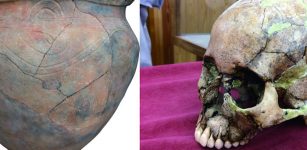 Ancient DNA Has Rewritten Early Japanese History
Archaeology | Sep 17, 2021
Ancient DNA Has Rewritten Early Japanese History
Archaeology | Sep 17, 2021 -
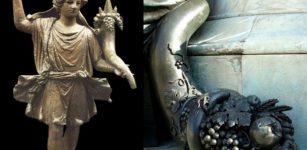 Cornucopia – ‘Horn Of Plenty’ – Ancient Symbol And Its Almost Forgotten Meaning
Ancient Symbols | Jan 14, 2019
Cornucopia – ‘Horn Of Plenty’ – Ancient Symbol And Its Almost Forgotten Meaning
Ancient Symbols | Jan 14, 2019 -
 Unexplained Historical Mass Disappearances – Lost Without Trace – Part 1
Featured Stories | May 31, 2019
Unexplained Historical Mass Disappearances – Lost Without Trace – Part 1
Featured Stories | May 31, 2019 -
 Garamantes: 3,000-Year-Old Sophisticated North African Society Built 3,000-Mile Network Of Underground Irrigation Canals
Featured Stories | Jan 29, 2022
Garamantes: 3,000-Year-Old Sophisticated North African Society Built 3,000-Mile Network Of Underground Irrigation Canals
Featured Stories | Jan 29, 2022 -
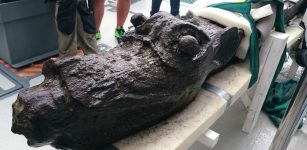 Mystery Of Gribshunden – Danish Royal Sunken Ship Sheds New Light On Psychological Warfare In The Middle Ages
Archaeology | Apr 14, 2017
Mystery Of Gribshunden – Danish Royal Sunken Ship Sheds New Light On Psychological Warfare In The Middle Ages
Archaeology | Apr 14, 2017 -
 On This Day In History: Galilei Galileo Demonstrates His First Telescope – August 25, 1609
News | Aug 25, 2016
On This Day In History: Galilei Galileo Demonstrates His First Telescope – August 25, 1609
News | Aug 25, 2016 -
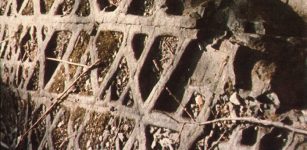 America’s Mysterious Waffle Rock Formation
Featured Stories | Apr 15, 2014
America’s Mysterious Waffle Rock Formation
Featured Stories | Apr 15, 2014 -
 Reconstructing The Lost Ancient World Of The Marquesas Islands With Unique Plants And Animals
News | Mar 31, 2022
Reconstructing The Lost Ancient World Of The Marquesas Islands With Unique Plants And Animals
News | Mar 31, 2022 -
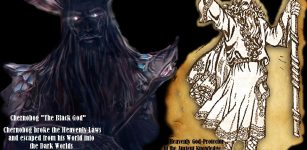 Belobog White God In Everlasting Fight With His Cursed, Evil Counterpart, Chernobog In Slavic Beliefs
Featured Stories | Dec 4, 2017
Belobog White God In Everlasting Fight With His Cursed, Evil Counterpart, Chernobog In Slavic Beliefs
Featured Stories | Dec 4, 2017 -
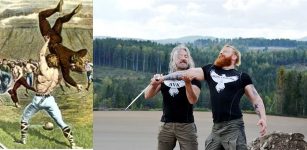 Glima – Ancient Martial Art Practiced By The Vikings Is Still Popular Today
Ancient Traditions And Customs | Mar 7, 2017
Glima – Ancient Martial Art Practiced By The Vikings Is Still Popular Today
Ancient Traditions And Customs | Mar 7, 2017 -
 The Egyptian Dream Book Reveals Ancient Predictions Of The Future
Egyptian Mythology | Jun 6, 2020
The Egyptian Dream Book Reveals Ancient Predictions Of The Future
Egyptian Mythology | Jun 6, 2020 -
 New Hope To Finally Find Tomb Of Alexander The Great
Archaeology | Mar 6, 2019
New Hope To Finally Find Tomb Of Alexander The Great
Archaeology | Mar 6, 2019 -
 2,000-Year-Old Roman House Discovered In Malta
Archaeology | Jul 27, 2023
2,000-Year-Old Roman House Discovered In Malta
Archaeology | Jul 27, 2023 -
 Ancient DNA Reconstructs Rise Of Largest Empires In History Of Inner Asia
Archaeology | Nov 6, 2020
Ancient DNA Reconstructs Rise Of Largest Empires In History Of Inner Asia
Archaeology | Nov 6, 2020 -
 Mysterious Disappearance Of Explorer Peng Jiamu In Lop Nur – The Wandering Lake
Featured Stories | Dec 20, 2018
Mysterious Disappearance Of Explorer Peng Jiamu In Lop Nur – The Wandering Lake
Featured Stories | Dec 20, 2018 -
 Dispute Between Russia And Poland Over Discovery Of Czarist Officer’s Corpse In Turkey
Archaeology | Apr 10, 2018
Dispute Between Russia And Poland Over Discovery Of Czarist Officer’s Corpse In Turkey
Archaeology | Apr 10, 2018 -
 Zuni Indians Bravely Fought For Their Ancient Culture, Traditions And Respect For Their Ancestors
Featured Stories | Mar 14, 2018
Zuni Indians Bravely Fought For Their Ancient Culture, Traditions And Respect For Their Ancestors
Featured Stories | Mar 14, 2018 -
 Enigma Of Ancient Upside Down Stairs At Sacsayhuamán
Featured Stories | May 27, 2014
Enigma Of Ancient Upside Down Stairs At Sacsayhuamán
Featured Stories | May 27, 2014

